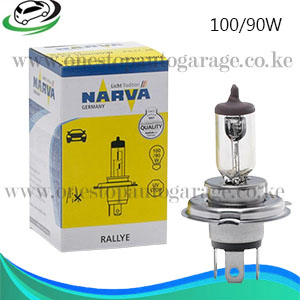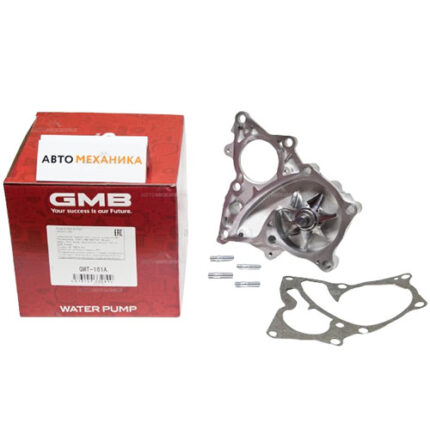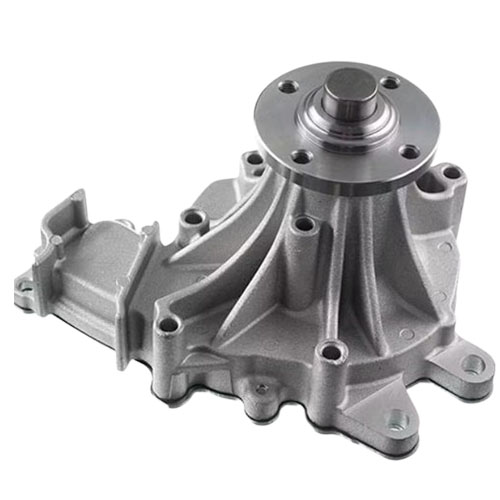-3%
Get Genuine Water Pump Assy Hilux Vigo with 1KD-FTV / 2KD-FTV Engines 16100-39485 in Kenya
The water pump assembly is a crucial component of a vehicle’s cooling system, responsible for circulating coolant through the engine and radiator. It ensures the engine maintains an optimal temperature, preventing overheating and reducing wear on critical components. A faulty water pump can lead to severe engine damage, making it essential for car owners to understand its function, benefits, and maintenance needs.
What is a Water Pump Assembly?
A water pump assembly is a mechanical component that helps move coolant (antifreeze and water mixture) through the engine and radiator. It ensures that the engine operates at a safe temperature by dissipating excess heat generated during combustion.
Components of a Water Pump Assembly
A standard water pump assembly consists of:
- Housing: Usually made of aluminum or cast iron, it encases the pump’s internal components.
- Impeller: A rotating metal or plastic blade that pushes coolant through the system.
- Pulley or Gear: Connected to the engine’s drive belt or timing belt to transfer rotational force.
- Shaft & Bearings: Help the impeller rotate smoothly and efficiently.
- Gasket & Seals: Prevent leaks by securing the pump to the engine block.
How the Water Pump Works
The water pump is driven by either the serpentine belt, timing belt, or timing chain. As the engine runs, the belt rotates the pump pulley, which turns the impeller inside the pump. This movement pushes coolant from the radiator into the engine, where it absorbs heat. The heated coolant then flows back to the radiator, where it cools down before repeating the cycle.
Coolant Flow Cycle:
- Coolant enters the pump from the radiator.
- Impeller blades push coolant through engine passages.
- Coolant absorbs engine heat and moves back toward the radiator.
- Radiator cools the fluid using airflow, and the cycle continues.
Importance of the Water Pump
A properly functioning water pump is vital for an engine’s health. Here’s why:
1. Prevents Engine Overheating
Without a working water pump, coolant wouldn’t circulate, leading to excessive heat buildup, which can warp engine components.
2. Ensures Optimal Performance
Maintaining proper engine temperature prevents power loss and ensures fuel burns efficiently.
3. Protects Engine Components
Overheating can damage the cylinder head, head gasket, pistons, and radiator, leading to costly repairs.
4. Improves Fuel Efficiency
An overheating engine can cause inefficient fuel combustion, increasing fuel consumption.
5. Reduces Wear and Tear
A well-maintained cooling system extends the life of the radiator, hoses, and thermostat, reducing maintenance costs.
Signs of a Failing Water Pump
A faulty water pump can cause severe engine damage if ignored. Watch out for these symptoms:
1. Coolant Leaks
- Cause: Worn-out gaskets or seals.
- Sign: Puddles of coolant under the car (usually green, red, or orange fluid).
2. Engine Overheating
- Cause: Pump failure leads to poor coolant circulation.
- Sign: Temperature gauge reading higher than normal or warning light turning on.
3. Unusual Noises (Whining or Grinding Sound)
- Cause: Worn-out bearings inside the water pump.
- Sign: A high-pitched whining noise from the front of the engine.
4. Steam from the Radiator
- Cause: Overheated coolant due to circulation failure.
- Sign: Visible steam or white smoke from the engine bay.
5. Rust or Corrosion on the Pump
- Cause: Contaminated coolant or a failing seal.
- Sign: Rust buildup around the pump housing.
6. Fluctuating Engine Temperature
- Cause: Intermittent coolant flow.
- Sign: The temperature gauge fluctuates abnormally.
Common Causes of Water Pump Failure
Understanding why water pumps fail can help you take preventive measures:
1. Worn Bearings
Over time, the bearings inside the pump wear out, causing noisy operation and potential failure.
2. Corrosion & Contaminated Coolant
Old or contaminated coolant can lead to corrosion, damaging the pump’s impeller and housing.
3. Loose or Worn Belts
A loose serpentine belt can cause the pump to spin inconsistently, reducing efficiency.
4. Gasket Failure
A worn-out gasket allows coolant to leak, reducing system pressure and causing overheating.
5. Poor Installation
Incorrect installation, such as over-tightening bolts or using the wrong sealant, can damage the pump.
Water Pump Maintenance Tips
To ensure the longevity of your water pump, follow these maintenance tips:
1. Regular Coolant Flushes
- Why? Prevents corrosion and buildup.
- How often? Every 30,000 – 50,000 km or as per the manufacturer’s recommendation.
2. Inspect for Leaks
Check for coolant leaks under the vehicle and around the pump housing.
3. Listen for Unusual Noises
A whining sound from the engine bay could indicate a failing pump bearing.
4. Monitor Engine Temperature
Watch the temperature gauge for sudden increases, as it may indicate poor coolant circulation.
5. Replace Belts and Hoses
A worn-out serpentine or timing belt can affect pump operation. Replace belts as needed.
6. Use the Correct Coolant
Always use the manufacturer-recommended coolant to prevent corrosion inside the cooling system.
Water Pump Replacement Guide
A faulty water pump should be replaced immediately to avoid engine damage. Here’s what to expect during replacement:
Steps Involved in Water Pump Replacement
- Drain the Coolant – Remove old coolant from the radiator.
- Remove the Belt – Loosen and remove the serpentine or timing belt connected to the pump.
- Unbolt the Old Pump – Carefully remove the bolts securing the pump.
- Clean the Mounting Surface – Scrape off old gasket material and clean the area.
- Install the New Pump – Use a new gasket and sealant if required.
- Reassemble & Refill Coolant – Reinstall the belt, tighten bolts, and refill with fresh coolant.
- Check for Leaks & Test Run – Start the engine and check for leaks or unusual noises.
Replacement Cost
- DIY Cost: $50 – $150 (for parts only)
- Mechanic Cost: $200 – $600 (including labor)
Conclusion
The water pump assembly plays a vital role in maintaining engine temperature and performance. Regular maintenance, timely replacement, and using the correct coolant can extend its lifespan and prevent costly engine repairs. If you notice leaks, overheating, or unusual noises, have your water pump inspected and replaced if necessary.
Taking care of your water pump ensures your engine stays cool, efficient, and reliable for years to come! 🚗💨
Follow us on Facebook for more parts.



